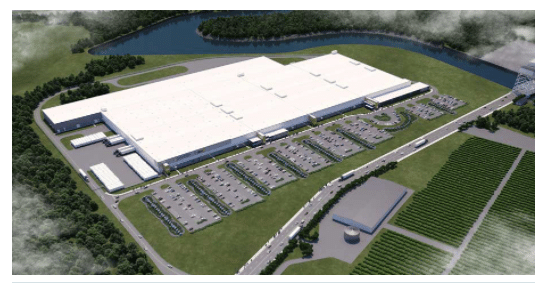Electric vehicle company Tesla on Sunday signed a non-binding letter of intent agreement with Japanese conglomerate Panasonic for the production of solar cells and modules at SolarCity’s factory in Buffalo, New York.
The collaboration hinges upon the completion of Tesla’s acquisition of SolarCity, the U.S. solar lease provider that is part-owned and chaired by Tesla founder Elon Musk. The acquisition rests on shareholders’ approval, which is expected shortly.
Once approved, Panasonic will begin manufacturing its solar cells and modules at the Buffalo plant, and while the language on a blog post was not entirely clear it appears that Tesla will buy Panasonic cells under a long-term purchase commitment. At the time of writing pv magazine staff were still waiting for clarification on this point from Tesla.
This would be a huge move for SolarCity, in moving away from Silevo for its cells and modules to Panasonic. Both Panasonic and Silevo make heterojunction cells based on a crystalline silicon wafer with integrated layers of amorphous silicon, however Panasonic has been doing this since the 1990s with its heterojunction intrinsic thin film (HIT) PV cells and modules.
The two companies are already collaborating closely on the development of electric vehicle and grid storage battery cells at the Gigafactory. This further deepening of the relationship will see Panasonic’s solar output used in the development of integrated solar energy systems designed for residential, commercial and grid-scale customers, and will be bundled with Tesla’s Powerwall and/or Powerpack storage products.
“We are excited to expand our partnership with Panasonic as we move towards a combined Tesla and SolarCity,” said Tesla CTO and co-founder JB Straubel. “By working together on solar, we will be able to accelerate production of high-efficiency, extremely reliable solar cells and modules at the best cost.”
Tesla added in a statement that the partnership with Panasonic is “an important step in creating fully-integrated energy products for businesses, homeowners and utilities”. Panasonic’s VP for the firm’s eco solutions unit said in a statement: “We expect that the collaboration talks will lead to the growth of the Tesla and Panasonic relationship.”
Production of the solar cells and modules is penciled in to begin next year. Tesla originally planned to produce 1 GW of Silevo PV cells and modules at the Buffalo factory, but it is unclear if that is still the case given such dramatic changes.
The two firms originally signed an agreement to cooperate on the construction of Tesla’s battery “Gigafactory” in Nevada more than a year ago, which has a planned production capacity of 35 GWh for cells and 50 GWh for battery packs by 2020. Construction costs are thought to be in the region of $4 billion to $5 billion, with Tesla investing around $2 billion.
Corrections: An earlier version of this article conflated Tesla’s Nevada battery “Gigafactory” and SolarCity’s Buffalo, New York “Gigafactory”. All mentions have been clarified, and we regret the error.
This content is protected by copyright and may not be reused. If you want to cooperate with us and would like to reuse some of our content, please contact: editors@pv-magazine.com.








By submitting this form you agree to pv magazine using your data for the purposes of publishing your comment.
Your personal data will only be disclosed or otherwise transmitted to third parties for the purposes of spam filtering or if this is necessary for technical maintenance of the website. Any other transfer to third parties will not take place unless this is justified on the basis of applicable data protection regulations or if pv magazine is legally obliged to do so.
You may revoke this consent at any time with effect for the future, in which case your personal data will be deleted immediately. Otherwise, your data will be deleted if pv magazine has processed your request or the purpose of data storage is fulfilled.
Further information on data privacy can be found in our Data Protection Policy.